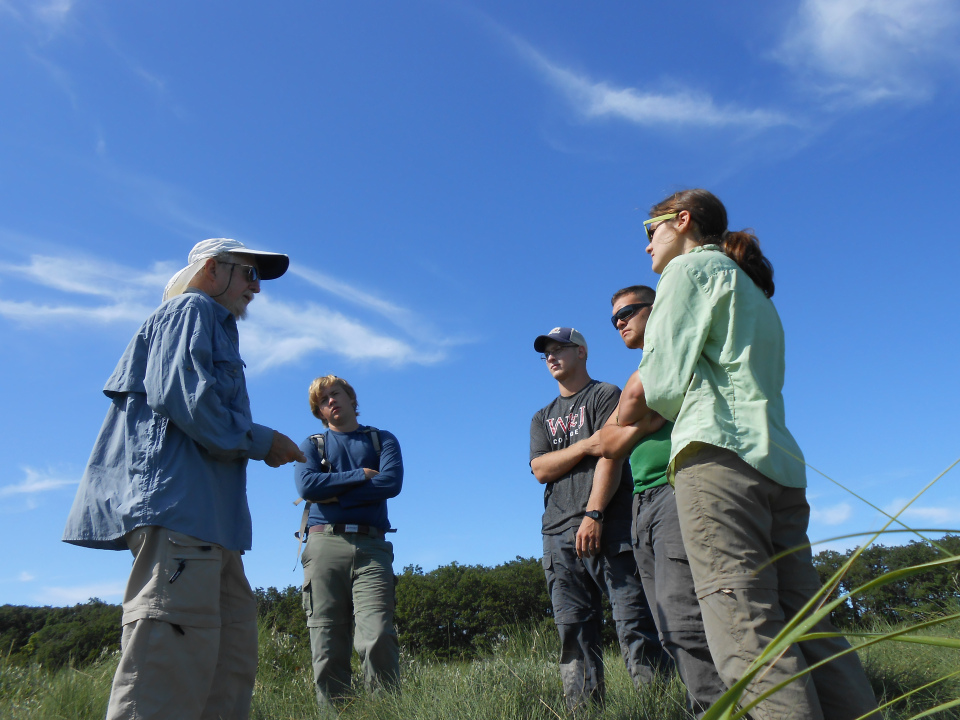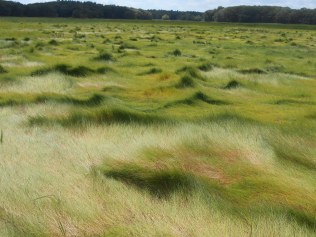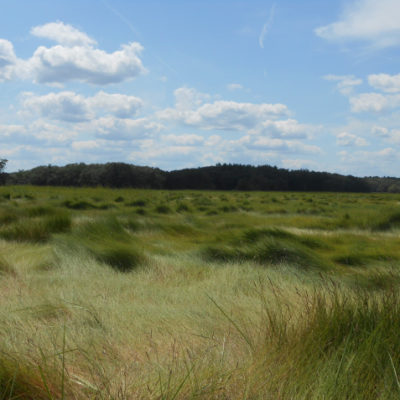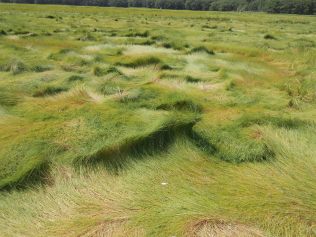Cowlicks of Spartina patens, Rowley, Massachusetts
Near the final curtain of every July in the marsh, just as the greenhead swarms abate and the swelter of real summer has a final push, emerges a new character on the scene: cowlicks. The flat marsh is punctuated with tufts of marsh grass that lean against each other in swirls like the cowlicks of hair of a little boy who just woke up. These are the cowlicks of Spartina patens.
According to Dr. Scott Warren, a ‘retired’ plant physiologist now retired from Connecticut College and TIDE Project principal investigator, these cowlicks form because “…patens has a weak joint at the base of the stem and when the tides come in they push the plants over. Some are laid flat, but sometimes they lean against each other and find support, creating cowlicks. The slight vagaries in elevation, stem density, and wind create those patterns.” And these cowlicks don’t appear until the end of July because that’s when the plants are tall enough to be pushed over.

Spartina patens is a soft, high marsh plant and it’s uncertain what the benefit of being a push-over to the plant is. If you consider patens resident saltmarsh cousin, Spartina alterniflora, it is rigid and not typically pushed over by the tides. In fact, many of the Spartina’s (Spartina alterniflora, Spartina cynosuroides, Spartina pectinata), have stiff reed-like stems, whereas patens does not. Why be such a softy and a pushover?
While the benefit to the plant is unclear to me (your hypotheses are welcome in the comments section), there are clear benefits to the animals. When patens lays down or cowlicks, it’s still attached to the sediment. At summer’s final bow and fall’s flourish here in New England, the aboveground portion dies but remains attached to the ground. In doing so, it is able to overwinter and form a layer of thatch on the ground. In the winter, this thatch acts as insulation to protect overwintering surface invertebrates such as snails that huddle around clumps of patens. In the summer, this thatch retains moisture from the infrequently flooding tides and provides a refuge of surface invertebrates from the heat and dryness of the sun. Should you like, you can watch a bare patch of marsh in the morning and watch snails run back into the protection of patens as the water-robbing sun rises in the morning. The thatch remains 2-3 years, and is replaced annually.
Spartina patens benefits two-legged animals not only via lush landscapes, but also by providing hay. The softness of patens and its position on the high marsh make it attractive to hayers. In fact, it’s common name is ‘salt marsh hay.’ In August, after the flooding spring tides, patens is cut, dried, baled and sold. Just like the colonists did, except with tractors. Chris Haight, a TIDE alum now in graduate school at Columbia University writes more about haying here.
The cowlicks of Spartina patens herald a more comfortable time in the marsh when the biting bugs are largely gone and the heat begins to lessen. A time when the seemingly sleepy marsh continues to lull the eye with its sweeping lushness and invites a moment to pause and wonder.
Note: a version of this blog first appeared on the New Leaf blog, written by yours truly. And yes, I know it’s September so I’m a little late with this one.
– David



Leave a Reply